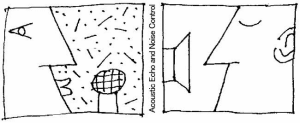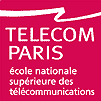|
Performance evaluation of sparse source separation and DOA estimation with observation vector clustering in reverberant environments
- Author(s)
-
- Shoko Araki, (NTT Communication Science Laboratories)
- Hiroshi Sawada, (NTT Communication Science Laboratories)
- Ryo Mukai, (NTT Communication Science Laboratories)
- Shoji Makino, (NTT Communication Science Laboratories)
- Topics
-
- Sound enhancement and sound separation
- Microphone arrays and array signal processing
- Noise and acoustic environments and characteristics
|
Get the paper in PDF format
Acrobat Reader
(version 5 minimum)
is necessary to read this document.
|
Abstract
This paper investigates the effects of real world acoustic environments on sparse source separation and direction of arrival (DOA) estimation performance. The time-frequency mask technique is widely studied
as an approach for sparse source separation and DOA estimation. The approach relies on source sparseness, which can easily be affected by, for example, reverberation. In fact, most proposed approaches assume an anechoic condition, which is difficult to maintain in a real acoustic environment. We investigate how the performance of such methods is affected when the problem does not meet the assumed conditions. We show that strong reverberation and a large distance between the sources and sensors degrade the separation performance, however,
the DOA estimation performance is not so severely affected.
|



